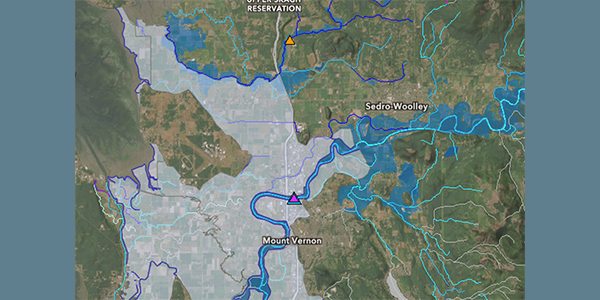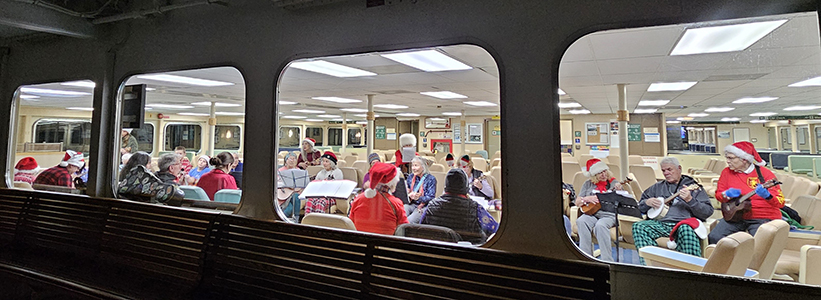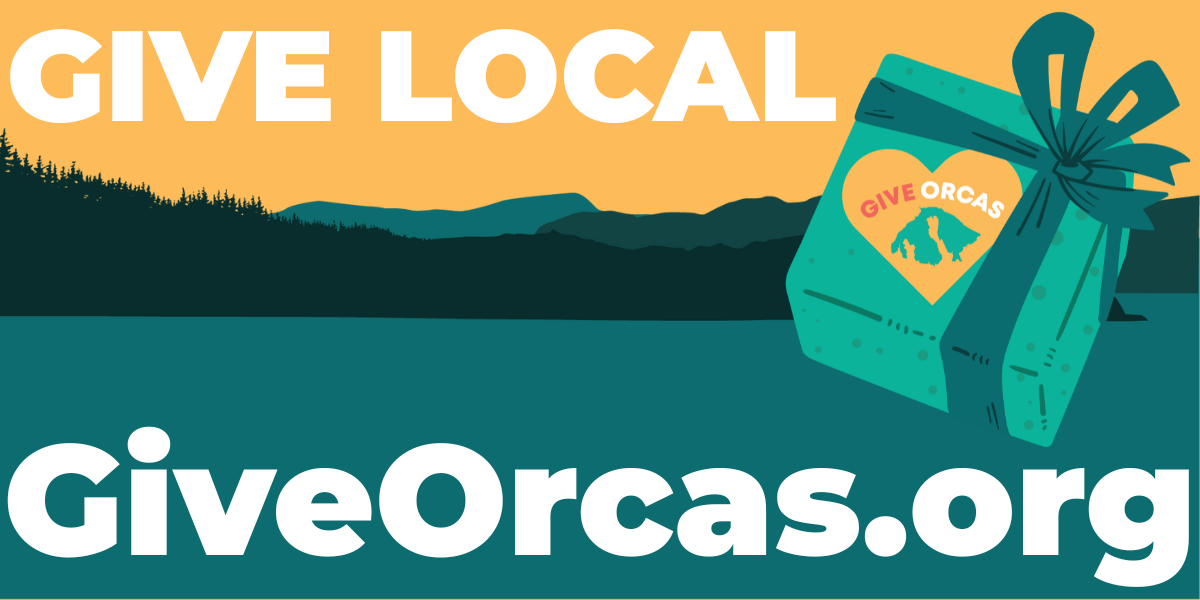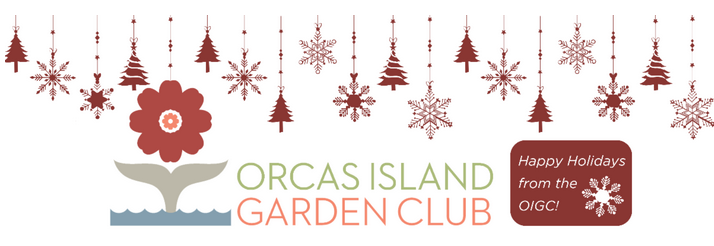The Washington State Salmon Recovery Funding Board announced last week that San Juan County had been awarded $1.458,776 out of $42.8 million in grants to protect and restore salmon populations to communities across Washington.
Steve Tharinger, chairman of the Salmon Recovery Funding Board, said on Dec. 15, “Salmon are an important part of Washington’s economy and culture. These grants are helping us reverse the decline in salmon populations we’ve seen over the past two decades.
“These grants are not only good for salmon, the environment and the people of
Washington, but they are good for the economy because much of this money will be awarded to local organizations to do restoration work in their local communities.”
The grants in the Puget Sound area also work toward implementing Governor Chris Gregoire’s initiative to restore Puget Sound. The grants from the Salmon Recovery Funding Board ranged from $17,000 to$1.7 million. The funding goes for big and small restoration and recovery projects across the state, including work ranging from planting trees along streams to cool the water for salmon, to replacing culverts that prevent salmon from migrating to spawning habitat, to restoring entire floodplains.
“Local watershed groups develop these projects based on regional recovery plans and with the support of regional salmon recovery organizations. This “bottom-up” approach to salmon recovery ensures that funding is focused on what they see happening in their communities,” Tharinger said. “The projects are then checked by the state’s technical review panel to make sure they will help recover salmon in the most cost-effective manner. This local and state partnership has made Washington a national model in salmon recovery.”
In San Juan County, the following grant awards were made:
- Friends of the San Juans — $86,310 to restore Barlow Bay Shoreline; The Friends of the San Juans will use this grant to restore water quality, intertidal and beach conditions in Barlow Bay by removing a derelict dock, creosote pilings and degraded rock armoring. Located in the southwest corner of Lopez Island, Mackaye Harbor, which includes Barlow Bay, is one of four priority shorelines in San Juan County because of its multiple spawning sites for surf smelt and Pacific sand lance, which are either eaten by salmon or eaten by salmon prey, and because of its eelgrass, which provides salmon places to hide from predators. Mackaye Harbor also is home to two of only nine documented Pacific sand lance beaches in the San Juans.
The Friends of the San Juans will contribute $15,240 in donations of cash, equipment and labor.
- Friends of the San Juans — $93,900 to research the San Juan County Feeder Bluffs;
The Friends of the San Juans will use this grant to complete analysis of historic shoreline feeder bluffs that contribute sediment to salmon habitat areas. Eroding bluffs,referred to as “feeder bluffs,” contribute sediment to the beaches, replacing sediment that is transported away by waves to maintain important salmon habitats such as spits and pocket estuaries and habitat for spawning forage fish. The friends group also will inform landowners and land managers about the importance of bluffs that feed sediment to salmon habitat areas.
The Friends of the San Juans will contribute $16,565 in donated labor.
- San Juan Preservation Trust — $224,000 to protect Cascade Creek;
The San Juan Preservation Trust will use this grant to buy and permanently protect 3.66 acres of riparian corridor, shoreline and tidelands vital to salmon habitat in Cascade Creek on Orcas Island. An additional 8.5 acres would be donated through a conservation easement by the adjoining property owners. Together, the entire salmon habitat portion and nearly .4 mile of the creek would be protected permanently.
Cascade Creek is one of the three most valuable freshwater salmon habitats in San Juan County and has historical use by Chinook, chum, coho and pink salmon and cutthroat trout. Included in the acquisition request is nearly a quarter mile of riparian corridor, including all 300 feet of currently available salmon habitat and 950 feet of upstream buffer habitat that could be opened up for spawning habitat. Also included will be 200 feet of shoreline and the adjoining tidelands where the salmon make their approach to Cascade Creek. The San Juan Preservation Trust will contribute $127,500 in donated land.
- Skagit Fisheries Enhancement Group — $309,521 to restore Thatcher Bay Shoreline
The Skagit Fisheries Enhancement Group will use this grant to wood waste, and the toxic sulfide contamination associated with it, from the Thatcher Bay Shoreline. Five thousand cubic yards of wood waste from a historic mill was deposited on the beach, covering 1.8 acres. After the sediment is dredged out, crews will bring in native sediment suitable for forage fish spawning. The work will restore the forage fish spawning habitat and restore intertidal areas to improve flora and fauna habitat. The Skagit Fisheries Enhancement Group will contribute $246,992 in donated materials.
- San Juan County — $247,000 to replace Cascade Creek Culverts
The San Juan County Public Works Department will use this grant to replace two culverts with a 40-foot bridge at the mouth of Cascade Creek, where it flows into Buck Bay under Point Lawrence Road on Orcas Island. The culverts are too small to convey flood flows down Cascade Creek and to allow full fish passage and tidal exchange.
Replacing the culverts will allow fish access to pristine habitat at the lower reaches of Cascade Creek. The creek is home is used by Chinook, chum, coho and pink salmon and cutthroat trout.
San Juan County will contribute $173,000.
- University of Washington — $297,836 to assess Salmon in the San Juan Islands
The University of Washington will use this grant to study the movement patterns of salmon and trout in the San Juan Islands. Other than work on smaller, juvenile salmonids and returning adult salmon, resource managers are not adequately informed about the species and life-stages of salmon and trout using the near-shore and marine habitats and migration corridors in the San Juan Islands.
There is a need to learn how, when and where the fish move between habitats and the importance of these habitats and prey resources to the recovery of salmon. These basic data gaps can limit strategic planning. The university will use the grant to provide data and analysis to help answer the following questions: when and where are resident and migratory salmon and trout species present, including larger juvenile (sub-adult) Chinook salmon? What life history types of Chinook salmon and other salmon species are present in various areas? What is the distribution of juvenile Chinook salmon and other salmon species by habitat area? What populations of Chinook salmon are present? Are there patterns to their movements? The assessment can provide Puget Sound lead entities information about the relative importance of San Juan Island habitat to Chinook and coho salmon and bull trout, steelhead and cutthroat trout, providing a link between watershed-based recovery plans and near-shore plans.
The University of Washington will contribute $68,815 in donations of labor and materials.
- Washington Water Trust — $50,209 to assess False Bay Watershed Flow and Habitat
The Washington Water Trust will use this grant to assess water quantity, quality, fish use and physical habitat in the False Bay watershed. The primary focus of the work will be on water quantity, including am assessment of water rights and flows.
Low stream levels are suspected to be caused by withdrawals of water in Friday Harbor and Zylstra Lake and other modifications to stream hydrology. Low stream levels can result in higher water temperature, decreases in rearing habitat and low levels of dissolved oxygen. As the largest watershed in the San Juans, False Bay is a vital part of feeding grounds for Chinook salmon. The analysis will include assessing physical habitat constraints to stream flows in the watershed including ditches, diversions, channelization and ponds. The water quality analysis will focus on toxic pollution.
The Washington Water Trust will contribute $15,540 in donations of equipment and labor.
- Wild Fish Conservancy — $150,000 to take Inventory of Streams in the San Juan Island
The Wild Fish Conservancy will use this grant to survey the San Juan Islands’ watersheds for cutthroat distribution, and conduct water type assessments. Crews also will identify any habitat restoration and protection opportunities and prioritize the top five projects. Water type maps are used to regulate development near streams; however, the maps are inaccurate and many streams are not identified or do not receive the protection they warrant. Results of the survey will be incorporated into the conservancy’s online maps and made available to state, local and tribal governments.
The Wild Fish Conservancy will contribute $26,500 in donations of equipment and labor.
History
Several populations of salmon were put on the federal list of endangered species in 1991. By then, the number of salmon had fallen to only 40 percent of historic levels in Washington, Oregon, Idaho and California. By 1999, almost three-fourths of Washington’s watersheds were affected by Endangered Species Act listings of salmon and bull trout. Those listings set off a series of activities including the formation of the Salmon Recovery Funding Board to oversee the investment of state and federal funds for salmon recovery. Since 2000, the board has awarded nearly $404 million in grants, funded by federal and state dollars, for 1,307 projects. Grantees have contributed nearly $160 million in matching resources, bringing the total investment to more than $564 million.
The funding comes from the federal Pacific Coastal Salmon Recovery Fund and is matched by state funds from the sale of bonds. The funding for these grants was approved by Congress and the Washington Legislature earlier this year. On Thursday, Dec. 16, Washington State received news that $80 million in 2010 federal funding for Washington and several other western states is in the final budget bill before Congress.
“We want to thank our Congressional delegation, especially Senator Patty Murray and Representative Norm Dicks, who have been champions of salmon recovery work,” Tharinger said. “Without their help at the national level, this important work wouldn’t be able to continue. All of Washington will benefit from
these grants.”
The Salmon Recovery Funding Board’s citizen members are appointed by the Governor. Staff support to the Salmon Recovery Funding Board and the process of project recruitment and review is provided by the Washington Recreation and Conservation Office.
Information about the Salmon Recovery Funding Board and the Recreation and
Conservation Office is available online at www.rco.wa.gov.
**If you are reading theOrcasonian for free, thank your fellow islanders. If you would like to support theOrcasonian CLICK HERE to set your modestly-priced, voluntary subscription. Otherwise, no worries; we’re happy to share with you.**







